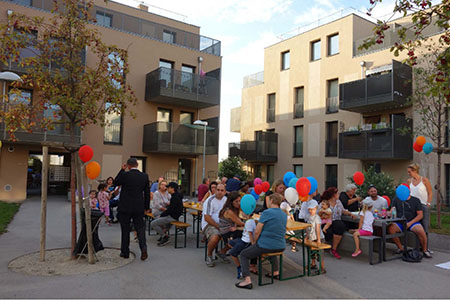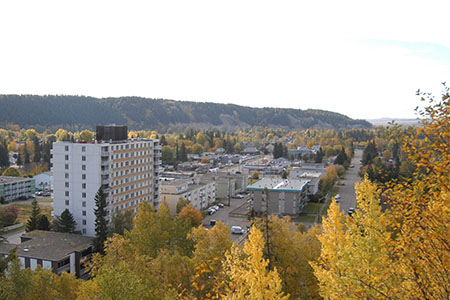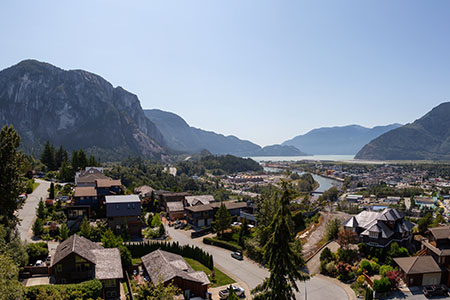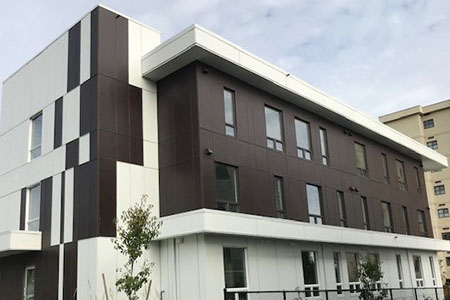
- Balconies – How much can they hold?
- Lessons from Austria on inclusion in housing design
- New video series shares links between economic development and affordable housing in non-metropolitan areas
- Lessons from the 2021 Licensed Residential Builder Survey
- Community Benefits of Supportive Housing report continues to build understanding
Balconies – How much can they hold?
 Your home is your sanctuary. And your balcony is an extension of that. But, before you add that hot tub or plant that oversized tree, take a moment to consider the weight implications. Is your outdoor area designed to take that kind of load?
Your home is your sanctuary. And your balcony is an extension of that. But, before you add that hot tub or plant that oversized tree, take a moment to consider the weight implications. Is your outdoor area designed to take that kind of load?
Placing heavy items on a balcony that it was not designed to carry can cause membranes and structures to fail. That can cause additional damage to the building envelope systems, windows, balcony railings, and landscaping. The Balcony Overloading and Weight Restrictions bulletin emphasizes that owners need to routinely inspect rooftop decks, balconies, and patios. Property owners and strata corporations should regularly inspect for damage, drainage restrictions, membrane failure, and overloading. Outdoor areas are designed for specific loads—both fixed and variable. Alterations can be risky if owners do not consider the structure’s design. Even ground floor unit residents need to be vigilant if their deck is over a parkade.
“I recommend strata councils and property managers review the latest Maintenance Matters bulletin, as well as others in the series. They provide an excellent support tool for building operations,” said Condominium Home Owners Association of BC (CHOA) Executive Director Tony Gioventu. “Strata corporations have the authority to limit and control use and enjoyment of decks, balconies, and patios. It can be in the best interest of all owners to adopt rules or bylaws that regulate excessive loads, including storage of heavy materials, that may contribute to structural failures.”
Maintenance Matters bulletins and companion videos are designed to provide practical information on maintaining residential buildings. Balcony Overloading and Weight Restrictions was prepared in collaboration with the CHOA. It and the entire series are available on the BC Housing website.
Lessons from Austria on inclusion in housing design
 What can the City of Vancouver learn about social housing from the City of Vienna, Austria—a city literally on the other side of the world with a completely different context? Quite a lot, it turns out..
What can the City of Vancouver learn about social housing from the City of Vienna, Austria—a city literally on the other side of the world with a completely different context? Quite a lot, it turns out..
In connection with the proposed Vienna House Multi-Unit Affordable Housing Demonstration Initiative, BC Housing’s Research Centre recently published Housing For All – An Exploratory Review of Social Housing Models in Vienna. The exploratory research project assesses the social-economic impacts of social housing models in the Austrian capital to evaluate their applicability to Vancouver.
In particular, the researchers wanted to learn how the Viennese housing case studies are contributing to a more diverse society, and inclusive of equity-seeking groups such as those with disabilities, newcomers, LGBTQ+, and racialized communities. Housing For All highlights the social value of a range of multiple-unit residential housing features, such as an open inner courtyard—a design element that is currently proposed for the Vienna House project in East Vancouver.
New research is being conducted regularly for this project. Learn more about upcoming reports such as understanding how to design housing for those with autism. Visit the Vienna House website, and subscribe to receive updates.
New video series shares links between economic development and affordable housing in non-metropolitan areas
 Housing demand in non-metropolitan areas of B.C., defined as communities of less than 100,000, is growing quickly. The Building Knowledge and Capacity for Affordable Housing in BC Small Communities webinar series explores ideas for why this shift is taking place, and identifies some challenges and opportunities.
Housing demand in non-metropolitan areas of B.C., defined as communities of less than 100,000, is growing quickly. The Building Knowledge and Capacity for Affordable Housing in BC Small Communities webinar series explores ideas for why this shift is taking place, and identifies some challenges and opportunities.
In the summer of 2021, the events hosted in partnership with the Community Development Institute (CDI) at the University of Northern British Columbia, attracted over 1,200 building industry professionals. These pre-recorded webinars are now available on our on-demand learning platform. Each video shares population and housing data, as well as emerging trends for non-metropolitan communities in seven distinct regions of B.C.: Northeast, Northwest, Central, East Kootenays, West Kootenays, Okanagan and Vancouver Island.
Case studies are shared by communities who have successfully increased the availability of affordable housing using various strategies. The incentives, initiatives, programs, agreements, and bylaws that helped them achieve their goals will be of significant interest to local government, planners, developers, builders, and the provincial government.
“The research highlights the strong links between housing and economic development potential in small B.C. communities. We need to focus on housing if we want to realize non-metropolitan B.C.’s economic potential” says CDI Co-Director Marleen Morris. “Communities need affordable rental housing in order to attract young workers, such as teachers, nurses, physicians, and those in the service, retail, and tourism sectors. These young workers are essential to the community and the economy and may not yet have the money to purchase a home.”
Check out the full line-up of videos on the Learning on Demand site.
Lessons from the 2021 Licensed Residential Builder Survey
 More than 1,200 Licensed Residential Builders took part in our 2021 survey. This important tool has allowed us to collect valuable insights since 2003. The survey provides typical builder profile information such as industry experience and construction activity, as well as builder satisfaction and perceptions related to research and education. Check out some of the highlights from the survey in our one-page summary report.
More than 1,200 Licensed Residential Builders took part in our 2021 survey. This important tool has allowed us to collect valuable insights since 2003. The survey provides typical builder profile information such as industry experience and construction activity, as well as builder satisfaction and perceptions related to research and education. Check out some of the highlights from the survey in our one-page summary report.
“I was particularly interested in the results regarding the BC Energy Step Code,” said BC Housing Senior Researcher Sarah Rutherford. “Just over half of respondents indicated that their company had built housing under the BC Energy Step Code in the last year, of which 51 per cent reported building to Step 3. Reflecting the increased use of the BC Energy Step Code, the proportion of builders working with an energy advisor reached a record high of 64 per cent in 2021.”
New to the survey this year were questions about the impact of climate change on the residential construction industry. Licensed Residential Builders were asked about the sector’s biggest climate change challenges and how the industry is adapting. The top challenges builders identified were the ongoing pandemic, extreme heat, wildfires, and air quality.
“These are important additions to the survey,” commented Rutherford. “A third of respondents reported that climate change is making a difference to where and how they build, with particular focus on mitigating extreme heat. It will be interesting to see how this percentage changes over the coming years.”
BC Housing uses the findings to guide and refine its services.
Community Benefits of Supportive Housing report continues to build understanding
 The Community Benefits of Supportive Housing report is a valuable tool when it comes to providing facts about the impacts of supportive housing. This information helps build understanding and address misconceptions. The report has been widely used and is an award-winning tool to support community engagement. Now, a new update offers even more useful information.
The Community Benefits of Supportive Housing report is a valuable tool when it comes to providing facts about the impacts of supportive housing. This information helps build understanding and address misconceptions. The report has been widely used and is an award-winning tool to support community engagement. Now, a new update offers even more useful information.
Supportive housing offers a home and support services to people who are experiencing homelessness or are at risk of homelessness. The services offered help individuals who may struggle to maintain housing and stay housed. People living in areas where new supportive housing is proposed often question its impact. The Community Benefits of Supportive Housing report answers common questions about the effect of supportive housing on neighbourhoods.
“Whenever BC Housing’s community engagement team is supporting specific supportive housing projects or building awareness of our various programs, we make sure we have copies of our Community Benefits of Supportive Housing report on hand,” said Senior Communications Advisor Renée Schisler. “It addresses how successful supportive housing can be. Our non-profit housing provider and local government partners also appreciate having this resource as they build awareness with a community. It’s full of easy-to-follow graphics and simple data that work well for PowerPoints, social media, and fact sheets.”
The document explains what supportive housing is and the effect it has on its immediate neighbourhood. The report was recently expanded to include additional facts and answers to some existing questions. People living in communities where supportive housing is being built can now review the report to learn why supportive housing offers a harm reduction approach for those who struggle with addiction. They can find out how supportive housing contributes to the local economy. And, they can understand more about the role of community advisory committees.
“We have more data on the benefits of supportive housing since we first issued the report,” said BC Housing’s Manager, Research, Rebecca Siggner. “Supportive housing is very successful in keeping people who have experienced homelessness housed. We know, for instance, that 95 per cent of residents living in BC Housing-funded supportive housing in 2020-21 were housed for at least six months. Of those, 81 per cent had been housed for at least a year.”
Discover more in the Community Benefits of Supportive Housing report.